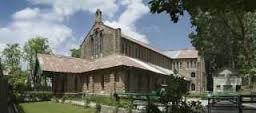Bhurban Hill Apartments
Bhurban (Urdu: بھوربن ) is a small town and a hill station in Punjab province, Pakistan. The resort town is named after a nearby forest. It is located approximately 9 kilometres from Murree city .
Bhurban is situated in between Murree and Kashmir Road at a height of about 6000 feet. It has recently been made accessible by the dual Islamabad-Murree Expressway, making it a 45 minute drive from Islamabad, the federal capital of Pakistan.
Bhurban's main resident families or tribes are Sheraals, Saidwals, mumdals tapyal Janyals, and Jogyals. Sheraals are one of the biggest families in Rawat which are the children of Dada Sher Khan. Sher ahmed khan mumdal kaya Noor Elahi Abbasi is from the same tribe. Raheem Dad Khan is one of the elders of this tribe since 1970. His sons Rasheed Ahmed, Zahoor Ahmed, Ashraf Khan are the three figures of the region.
Murree features a subtropical highland climate (Cwb) under the Köppen climate classification. It is situated in the outer Himalayas, retaining high altitude. This type of area has cold, snowy winters, relatively cool summer with drastically escalated rain, in relation with lower altitudes, and frequent fog. Precipitation is received year round, with two maxima, first one during winter and second one at summer, July–August. Total mean precipitation annually is 1,789 mm (70.4 in).[7]
A variety of rare animal species can be found in Murree, including the leopard, which inhabits the neighboring Galiyat region. More common animals include the rhesus monkey, wild boar, foxes and various species of birds, including the Cheer Pheasant and Kalij Pheasant. The area gives its name to the Murree vole, a rodent species endemic to Pakistan.
Many fruits introduced to the region during the period of British occupation, including cherries, raspberries and strawberries, still thrive locally.
Murree Christian School is a small boarding school located at over 7000ft in the foothills of the Himalayan mountains in Pakistan.
Founded in 1956 to educate the children of missionaries who serve in Pakistan and neighbouring countries Murree Christian School currently accepts students in grades 4-12. Staff and students come to Pakistan from around the world – North America, UK and other European countries, Korea, Australia and New Zealand.
The essential philosophy of Murree Christian School is to maintain a school in which a high quality of Christian education may be offered in a Christian atmosphere.
Murree Christian School exists so that students may learn. We believe that students need to learn, enjoy learning so they can learn, and that learning occurs both inside and outside of the classroom.
Murree Christian School believes that the Bible and Christian experience are essential to the fullest well-being of students and acts accordingly.
As a Christian boarding school Murree Christian School has a unique role to play in the lives of its students encouraging independence and responsibility and of being a home away-from-home.

.jpg)

.jpg)

No comments:
Post a Comment